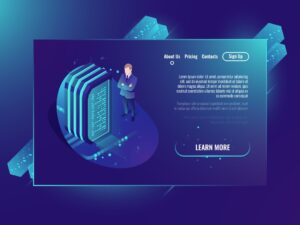Contents
strategic technology solutions
Strategic technology solutions are crucial for businesses looking to raise effectiveness, competitiveness, and adaptability to a constantly changing technological environment. These solutions require a holistic method of infusing technology into business plans, ensuring that investments in technology align with the organization’s overall goals. Here are some key components and examples of technology-based strategic solutions
Unlocking Business Potential through Technology Solutions Provider

og, where we discuss the power of technology to transform solutions for companies. As a top tech solutions company, we know the importance of staying ahead of an ever-changing digital world. We’ll discuss how strategic technological solutions can unleash your company’s potential and benefit drive continuous growth.
The Importance of Strategic Technology Solutions
In the current competitive environment, technology is more than just an enabler and an essential strategic differentiation. Companies that utilize technology can boost efficiency, improve customer experiences, and innovate continually. Here’s how the right technology solutions can have a significant impact
Digital Transformation: Embrace the Future
Digital transformation requires redesigning your business models and processes to maximize digital technology. By embracing cloud computing, you will warrant the flexibility and scalability, allowing your staff to work from anywhere. This transformative change improves operations and opens new opportunities for innovation.
Digital Transformation
- Definition: Rethinking business models and processes for digital transformation requires redesigning your business models and methods to make the most of digital technology. By embracing cloud computing, you will warrant the flexibility and scalability that allow your staff to work from anywhere. This transformative change does not just improve operations but also opens new opportunities to innovate.
- For example, cloud computing is a way to improve the ability to do so.
Data Analytics and Business Intelligence
- Definition: Utilizing data analysis tools to collect information and aid decision-making.
- Example: Utilizing predictive analytics to predict market trends and customer behaviors.
Customer Relationship Management (CRM) Systems
- Definition Management of the company’s interactions with its current and prospective customers with the analysis of data.
- For example, Salesforce can monitor customer interactions and tailor marketing campaigns.
Enterprise Resource Planning (ERP) Systems
- Definition Integration of core business processes using a unified system.
- Example: The SAP ERP implementation will simplify finance, supply chain, and HR functions.
Cybersecurity Solutions
- Definition: Protecting networks, systems, and software from digital attack.
- Example: Utilising sophisticated security and threat detection solutions to protect sensitive information.
Artificial Intelligence (AI) and Machine Learning (ML)
- Definition: Using AI and machine learning to optimize and automate business processes.
- For example, AI-driven chatbots can assist customers in increasing the speed of response and customer satisfaction.
Internet of Things (IoT)
- Definition: Connect physically-based devices with the Internet to collect and exchange information.
- For example, in production, IoT sensors are used to monitor equipment health and performance.
Blockchain Technology
- Definition: Decentralized ledgers are used to improve security and transparency.
- For example, blockchain can ensure security and transparency in controlling supply chains.
Collaboration and Communication Tools
- Definition: Effective communication and collaboration among teams.
- For example, Microsoft Teams or Slack can facilitate effortless remote collaboration.
Automation and Robotics
- Definition is automating routine tasks to improve efficiency and decrease errors.
- Example: Using robot process automation (RPA) in financial services to process transactions.
Implementing Strategic Technology Solutions
Assessment and Planning
- Business needs analysis: Find specific problems and opportunities within the company.
- Technology Roadmap Create a strategy that outlines the technology initiatives that align with the company’s goals.
Execution and Management
- Project management: Make sure technology-related projects are completed on schedule and budget.
- Change Management: make up and support employees during the transition to new technology.
Evaluation and Optimization
- Performance metrics Measure the impact of technologies on the performance of businesses.
- Continuous Enhancement: Continuously update and improve technology strategies to keep pace with changing requirements.
Benefits of Strategic Technology Solutions
- Greater Efficiency Processes are streamlined and lower operating costs.
- Improved Decision-Making Data-driven insight leads to more strategic decisions.
- Enhances Customer Experience The result is more personalized and user-friendly interactions with customers.
- Competitive advantage: staying ahead of the competition using cutting-edge technology.
- Scalability: The ability to expand and quickly adapt operations to the market’s changing needs.
In short, strategic technological solutions are essential for modern companies to flourish. By thoughtfully integrating and coordinating modern technologies,, can improve efficiency, innovation, and market position.








